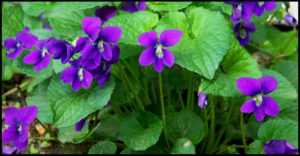What Goes Up Must Come Down
by Christine Maccabee
The chilly, windy rainstorms of May and June are over, with much flooding and sadly loss of life and property in Ellicott City, Frederick City, and elsewhere.
The humid weather has now set in, which, of course, breeds gnats, mosquitoes, and other tiny flying pests; yet, swallows and blue birds need them to feed their newly hatched babies, as well as themselves. So, I try to appreciate them, even as I transplant my peppers and tomatoes, which should have been planted a month ago, if the rain had just abated.
Many gardening friends, both professional and serious hobbyists, have expressed frustration about the quantity of cold rain this spring. Having read a bit from good sources, and even as I use my own intuition, I now believe I know what is happening. All during that cold, rainy spell, I kept saying “What goes up must come down.” I would say it to people I met as we ran into the Food Lion or CVS, sometimes taking time to explain my theory, which at this point is no theory at all, but actual. The earth’s natural air-conditioning system is disappearing as the many amazing glaciers, Greenlands white snow/ice shield and the polar ice caps are melting. Everything is melting three times faster than expected. (Once it is all melted, then we will see even hotter weather with wildfires and drought, already occurring in many places out west.)
Some of this melting ice flows into the ocean, and some evaporates into the atmosphere. All this is simple science, which even my twelve-year-old grandson understands. The Earth is becoming confused, and so are we. Human stress levels are soaring and suicides increasing. Yes, we can no longer deny what is happening on many levels, and many people are becoming more aware. Truth is, levels of CO2 emissions (and methane, as well) remain high and our lifestyles contribute to it daily. Did you know that mowing acre upon acre of grass on large estates is one of the greatest contributors to CO2 pollution? So, who cares, you ask.
Actually, we all should care. Even if many people in our own country do not care, many of us do and are working towards positive changes, such as alternative energy use and conservation practices. Yes, when the rain comes down it affects us all, even those of us who care, and it is not getting any better. According to studies made at the University of Pennsylvania, future hurricanes will be qualitatively different than ones we have seen thus far, possibly even worse than past ones. Allow me to explain.
Due to more moisture in the atmosphere and disruption of climate patterns, hurricanes are moving more slowly and linger longer over larger areas, thus perhaps all the very cold rain and wind we saw this spring in our part of the world. Future hurricanes, due to continuing melting of ice and snow (even our beautiful snow-capped mountains are in trouble these days) could see winds up to 200 mph or greater. Recent hurricanes, such as Irma, saw 185 mph winds in the Virgin Islands, and Patricia went as high as 200 already. These are winds far beyond a category 5. Experts are saying they are in a new category: 6.
Pope Frances, a wonderful advocate of caring for Creation, invited leading oil executives to a two-day conference at the Vatican. No matter your feelings about the Pope, he says it straight, and he said it there to CEOs of ExxonMobil and other energy producers. He said we can and must do better, and though “Civilization requires energy, energy must not destroy civilization,” and he encouraged innovation. I am sure he would also encourage living more conservatively, more simply.
So, as the rains continue to fall on us all, and the winds get stronger and sea levels rise, and fires and drought increase, we will all need to be inventive and conservative in order to survive. As for me, I will persist in growing my own food and herbs, support local farmers, provide habitat for wildlife, and mow less. I will also vote.
Such a wonderful country and world we have. I thank God for the beauty and mystery of Creation every day as I work with it and explore it. I hope you enjoy it—gnats and all—and never take anything for granted, for it is a precious gift we should all cherish and protect.

 Second, where-ever possible, allow violets, clovers, and dandelions to grow, controlling the seeds of the dandelion if you do not want it to take over. In doing so, you are taking time to enjoy nature, while you pluck the seed heads off the dandelions, perhaps making it a game for your children. I have been doing this for years, and it is easy. Of course, I always allow some seeds to go for the next year’s growth. I love dandelions!
Second, where-ever possible, allow violets, clovers, and dandelions to grow, controlling the seeds of the dandelion if you do not want it to take over. In doing so, you are taking time to enjoy nature, while you pluck the seed heads off the dandelions, perhaps making it a game for your children. I have been doing this for years, and it is easy. Of course, I always allow some seeds to go for the next year’s growth. I love dandelions!